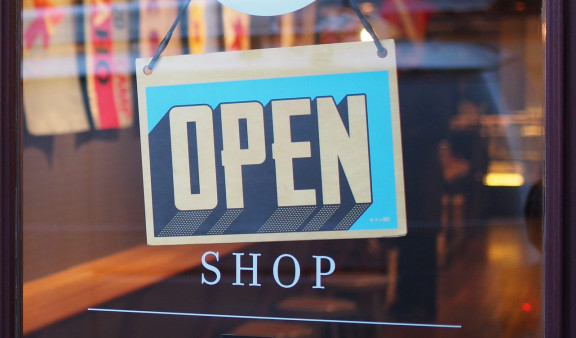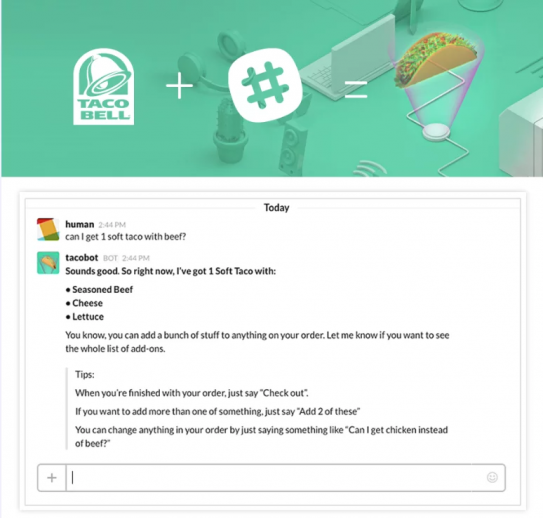
What US in-store trends will we see in 2019?
2018 has been a busy year for US mass retail.
The war between Wal-Mart and Amazon has boosted the sector and a number of brands and start-ups have popped up. Brands are developing smarter and more tactical strategies to forge ahead and offer their fast-changing customer base a better in-store experience. 2019 is set to be a fascinating year, and though the year is far from finished, here are a few trends spotted by the SQLI Lab for next year in mass retail and stores.
2019: the year of innovative partnerships
US mass retailers are looking to create partnerships with start-ups and major e-retailers as they play catch up.

Amazon entered into an agreement with the Sears retail group to enable consumers to buy tyres online then get them fitted by the retailer. This partnership is fruitful for Amazon as it increases its retail footprint in a sector where customers generally buy in-person and in-store. For Sears, the aim is to get customers in-store and sell them other products when they come in to get their tyres fitted.
Likewise, Amazon now works with Best Buy electronics stores to sell smart TVs. The brand will market televisions using Amazon’s Fire TV system. The giant founded by Jeff Bezos has fully understood that customers are still used to buying certain products in brick-and-mortar outlets. This partnership will provide it with a cheaper shop window.

Elsewhere, Macy's bought STORY, a company that manages a concept store proposing storytelling based on the products presented. Therefore, Macy’s wanted to engage the services of an in-store experience specialist to improve its in-store offering for customers who are beginning to come back to this temple of shopping in New York.

Source: https://thisisstory.com/our-new-story-is
This should therefore be a stand-out trend in 2019 and will not be limited to the US market. Many partnerships should also be established in Europe to provide a better in-store customer experience by developing a high-quality omnichannel strategy. These partnerships will also help to expose these companies to new ideas and tactics. When a brand starts working with a start-up, it has more chance of being seen as an innovative company.
2019: increased contact with its customers
According to a new report by Juniper Research, chatbots will allow retailers, banks and organisations in the healthcare sector to save €11 billion a year for the next five years. The results underline the increasingly crucial role played by voice or text assistants based on artificial intelligence in the future - and present - of the industry. Savings are generated by reducing the time companies spend on customer service activities - approximately 2.5 billion hours for the three industries by 2023. AI will allow retailers to reduce their payroll (e.g. call centre operators).
This report predicts that in 2023, more than 70% of chatbots will be focused on retail sales. Retailers will still see this technology as a way to make savings and generate income. For retailers, one chatbot growth factor will be increased integration of technology into brands’ mobile applications. Chatbots will allow them to achieve new objectives. In addition to answering questions and helping customers to find the products they’re looking for, chatbots are used to persuade buyers to spend more, to detect customers who abandon their carts, to record sales and to convince them to sign up to loyalty programmes.
The study showed that for retailers, annual transactions would total $112 billion per chatbot by 2023. Some examples
- With Taco Bell’s TacoBot, Slack users can order chalupas and nachos directly via the messaging platform.
- Starbucks gives consumers the option of ordering drinks via the chatbot integrated into the mobile application via voice or text commands, and lets them know when the order is ready.
- The Staples chatbot, developed in partnership with Watson, helps customers to place orders or answers questions on previously-placed orders.

TacoBot in action. Source: http://fortune.com/2016/04/06/tacobot-taco-bell/
In addition to Jupiter, Gartner predicts a big future for chatbots, particularly in retail. Gartner forecasts that approximately 25% of customer service operations will have integrated chatbot technology in just two years’ time. One reason is that humans quickly adopt this technology. According to a survey conducted by Mastercard and Mercator, one in five US consumers has already made purchases using VCA (Video Content Analysis) technology, and two-thirds have already used chatbots. Chatbots should therefore continue to break through into retail in 2019, allowing brands to collect custom information on customers.
2019: Ethical shopping
US consumers are paying more attention than ever to products, raw materials, and respect for the environment. Brands therefore need to keep up with this trend. Likewise, ethical issues are increasingly important in the current political climate. This year, a number of examples of brand commitment to products and customers have confirmed that this trend will continue in 2019.

The Buy-One Give-One, model popularised by Toms, Bombas and Yoobi, places public good and social impact at the centre of consumers’ concerns. Today, more and more brands are demonstrating to generation Z (the next generation of consumers) that they are concerned about more important things than their profits.
Allbirds and Reformation are committed to creating sustainable clothing brands and Everlane is fighting for price transparency and factory safety. In 2018, it’s not just the actual product that attracts the attention of young consumers but what it represents. This ethical shopping will have an even bigger impact on customers in 2019.

2019: a year of active transition
The retail sector is buzzing and many experts agree that mass retail will change more by 2020 than it has over the last 50 years. By 2020, it won’t only be Millennials that retailers have to satisfy, but generation Z, who will have an impact on the sector’s trends. In 2020, generation Z customers will be the largest group of consumers worldwide. These new customers will have tools at their fingertips and buy using digital tools like no previous generation.
Moreover, they’ll find the best prices and at the same time make sure that the retailer they’re supporting has a social conscience. 2019 will therefore be a year of major transition, featuring a number of changes to brands’ attitudes to their customers. Retailers must take account of new customer demands as well as their own development needs.
Partnerships will enable them to quickly increase their knowledge and experience. Communication with customers via chatbots and artificial intelligence will improve the quality of models and, as a result, the quality of offerings. Finally, ethical shopping will improve the company’s brand image and become a major marketing asset.